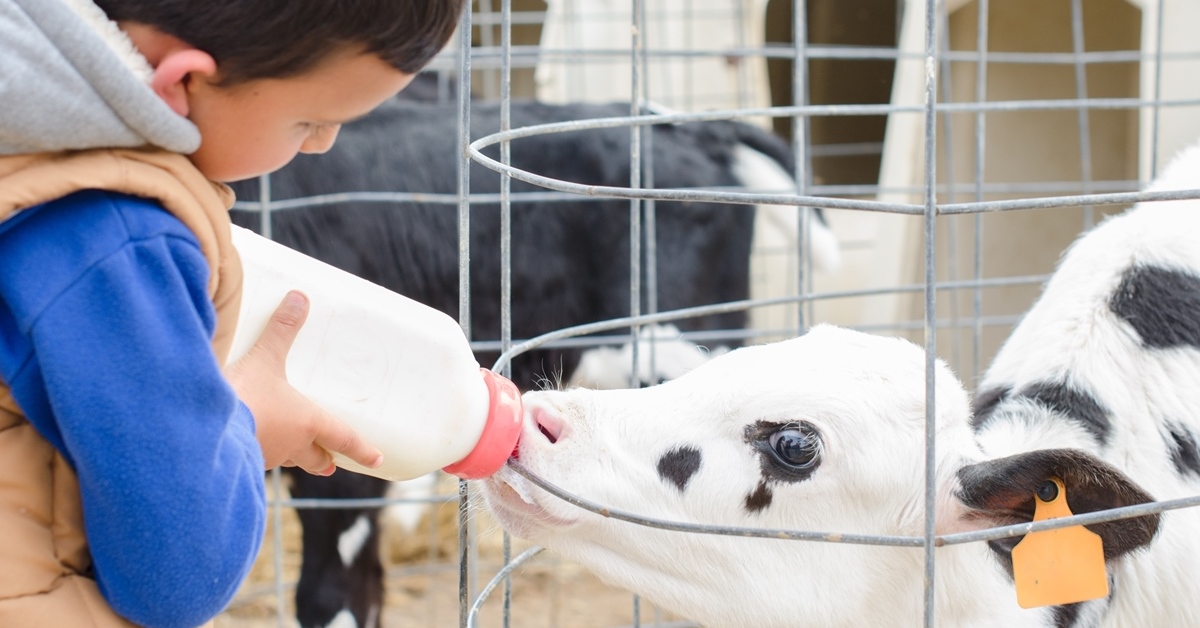
For both ethical and economic reasons, the push to reduce antibiotic use in calf-raising facilities continues to increase, and new research attempts to illustrate various ways that calf managers can implement realistic and sensible disease-prevention strategies in their calf raising programs.
When maternal colostrum is unavailable, colostrum replacer is often used in its place to provide immune protection, nutrition and energy to newborn calves. The value of a colostrum replacer is often determined by its immunoglobulin G (IgG) content. These large antibody proteins are necessary to protect the calf from both disease and invasive bacteria while their enteric immune system continues to develop.
Some of the additional benefits of colostrum replacer include:
- Biosecurity: Prevents transmission of diseases, such as Johne’s
- Quantity: Minimizes inventory concerns when maternal colostrum supplies are short
- Quality: Reduces cow-to-cow variation in IgG concentration associated with maternal colostrum
- Convenience: Minimizes hassles associated with night calving and thawing frozen colostrum
- Cleanliness: Eliminates potential bacterial contamination issues with maternal colostrum
When colostrum replacer is fed within the first two hours of birth and again within the first 24 hours of life, IgGs are absorbed through the small intestine and into the bloodstream, where they provide immune protection for the animal. Any IgGs that are not absorbed into the blood remain in the small intestine, where they act as the first line of defense against harmful bacteria and diseases that may be present in the gut.
But what about feeding colostrum or a colostrum replacer beyond 24 hours of life?
Research conducted 10 years ago explored whether the benefits of supplementing IgG could continue past the first 24 hours of life when added to the milk replacer. Berge et al., (2009) piloted a study to determine how supplementing 20 g/h/d of IgG in the milk replacer for 14 days would affect morbidity and other parameters. These parameters were measured through weaning at 60 days of age. The morbidity levels of calves supplemented with IgG versus the calves who received a placebo supplementation that did not include IgG are as follows:
|
Treatment group |
Diarrhea days (% of trial days) |
Respiratory days (% of trial days) |
Treatment days (% of trial days) |
|
IgG-supplemented |
6.1 |
1.0 |
8.2 |
|
Placebo-supplemented |
10.7 |
1.46 |
12.3 |
New research to determine whether feeding IgG in the milk replacer past the typical 24-hour time frame would continue to reduce antibiotic use was presented at this year’s American Dairy Science Association national meeting (Geiger et al., 2019). This research trial expanded on the Berge et al. trial from 2009, featuring three different treatment levels of IgG supplementation for 14 days:
- 0 g/hd/d IgG (CON)
- 10 g/hd/d IgG (CR10)
- 20 g/hd/d IgG (CR20)
Antibiotic use, morbidity and mortality were monitored throughout the study, ending at day 69, when calves were moved out of their individual hutches. The results were as follows:
- The likelihood of calves needing antibiotic treatment for diarrhea was 32% less for CR20 calves than for CON calves.
- CR20 calves were 48% less likely than the CON calves to be treated with antibiotics, for any reason.
- There was a numerical reduction in antibiotic use for CR10 calves when compared to CON calves.
- CR20 calves had a 70% lower mortality than CON calves.
|
Treatment group |
Mortality rate (%) |
|
CON |
6.6 |
|
CR10 |
5.4 |
|
CR20 |
2.0 |
The results of both studies clearly indicate that there are benefits to including IgG proteins in the diets of calves past the colostrum-feeding phase. By reducing mortality rates and morbidity rates, specifically respiratory and digestive disease, we limit the need to treat these animals and, in turn, decrease the need for antibiotics. Contact your local Hubbard Feeds calf specialist to learn how to implement this strategy in your calf-raising program.
- Log in to post comments
